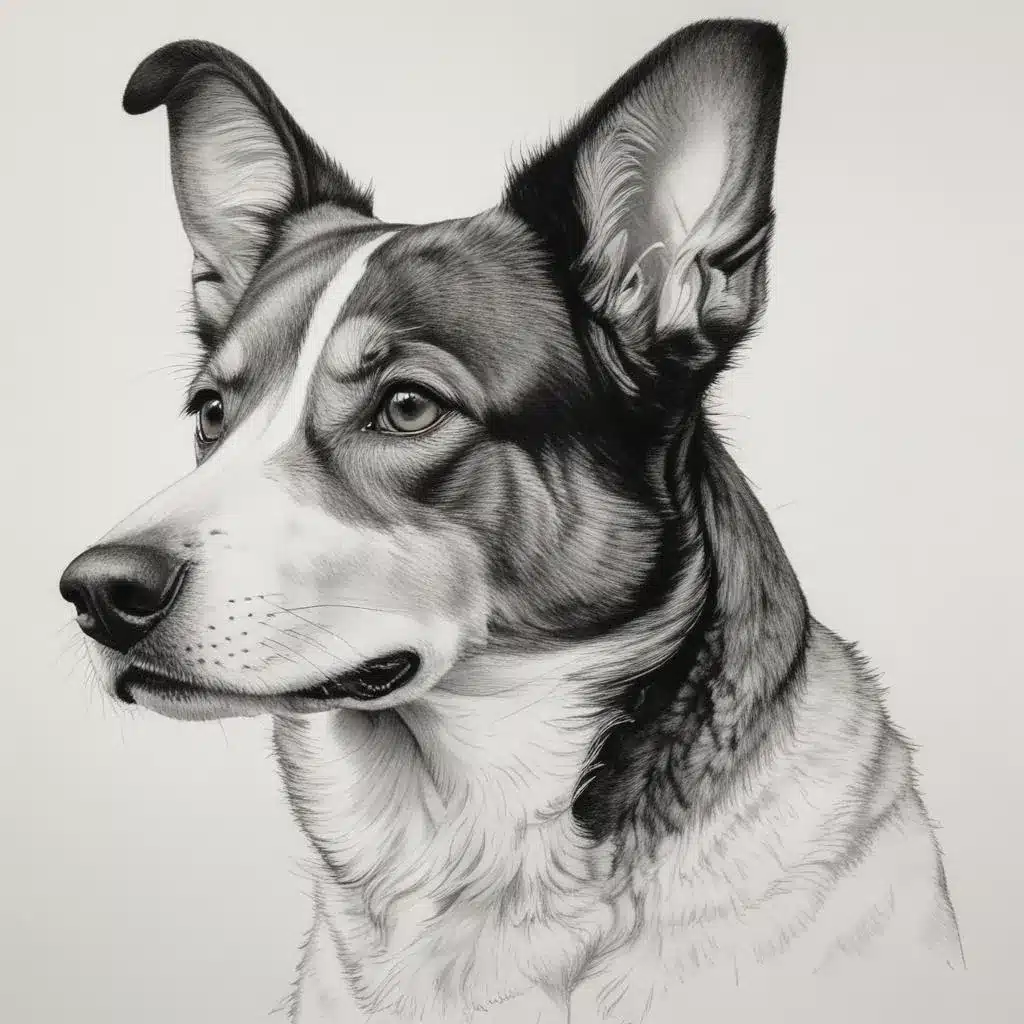
In a world where art is often celebrated for its bold colors, intricate details, and grand statements, there exists a captivating realm of minimalist pet drawings that capture the very essence of our furry companions. Through the skillful use of pen and ink, artists are able to distill the personality and spirit of animals into simple yet powerful compositions. This approach, with its focus on thoughtful mark-making and negative space, offers a refreshing alternative to the more traditional pet portraiture.
Now, this might seem counterintuitive…
Modern Painting Techniques
At the heart of this minimalist approach lies the concept of working with limitations. As one artist eloquently described, the creative breakthrough often comes when we embrace constraints rather than fight against them. This sentiment is beautifully exemplified in the “One Dip Rule” – a technique where an artist completes an entire portrait using only a single dip of ink from the well.
This exercise forces the artist to make quick, deliberate decisions, removing the temptation to overthink or endlessly tweak the drawing. The result is a captivating sketch that captures the essence of the subject through the judicious use of line and negative space.
“What you leave out of a drawing is often as important as – sometimes more important than – what you put in.”
This sentiment is echoed by the renowned artists who have mastered the art of minimalism, such as William Steig, Sam Gross, Liana Finck, Bill Watterson, and Patrick McDonnell. These creators understand the power of restraint, paring down their compositions until only the essential elements remain.
Pen and Ink Drawing
The medium of pen and ink lends itself particularly well to this minimalist approach. The fluid nature of ink allows artists to create expressive, gestural lines that capture the movement and personality of their animal subjects. By focusing on the key details and stripping away the unnecessary, these drawings evoke a sense of immediacy and spontaneity.
One such example is the work of Poster and Paw, a studio that specializes in creating minimalist pet portraits. Their “Sketch” style in particular showcases the beauty of this technique, with each line and mark contributing to the overall character of the animal. The use of negative space allows the viewer to fill in the gaps, engaging their own imagination and interpretation.
Creative Process
But the journey to creating these powerful minimalist pet drawings is not without its challenges. As artist Bill Tillier explains, the process of paring down a composition to its essential elements requires a keen eye and a deep understanding of one’s subject. It’s about capturing the very essence of the pet, rather than simply rendering its physical features.
This creative process often begins with extensive observation and reference photography. The artist immerses themselves in their subject, studying the animal’s unique quirks, expressions, and body language. From there, they experiment with different composition techniques, exploring how to best convey the personality and character of the pet through minimal lines and shapes.
The act of editing and refining the drawing is just as crucial as the initial sketch. As Tillier notes, ”What you leave out of a drawing is often as important as – sometimes more important than – what you put in.” This process of continuous refinement and reduction is what ultimately gives these minimalist pet drawings their power and impact.
Drawing Tutorials
For aspiring artists looking to explore this captivating style of pet portraiture, there are a wealth of resources and tutorials available. One particularly interesting exercise is the “One Dip Rule” mentioned earlier, which challenges the artist to complete a portrait using a single dip of ink.
Another approach is to focus on capturing the essence of the pet through ink wash techniques. By using a wet brush and diluted ink, artists can create soft, atmospheric backgrounds that allow the subject to emerge through careful placement of bold, gestural lines. This method encourages an intuitive, expressive approach to drawing, where the artist responds to the flow of the ink and the interaction of positive and negative space.
Materials and Mediums
When it comes to the materials used in minimalist pet drawings, the focus is often on the versatility and expressiveness of the medium itself. Pen and ink are a natural choice, with artists ranging from dip pens to fineliners to explore the subtle nuances of line quality and ink flow.
The selection of paper or surface can also play a crucial role in the final aesthetic. Smooth, high-quality drawing papers allow for fluid, uninterrupted lines, while textured surfaces can add an intriguing element of tactility and depth to the artwork.
In terms of the color palette, minimalist pet drawings often embrace a limited, monochromatic approach. The emphasis is on the interplay of dark and light, with the negative space becoming as much a part of the composition as the drawn elements.
Capturing the Essence
Ultimately, the power of these minimalist pet drawings lies in their ability to capture the very essence of the animal subject. By stripping away the extraneous details and focusing on the most meaningful elements, artists are able to create portraits that resonate on a deeper, more emotive level.
Whether it’s the soulful gaze of a feline, the playful spirit of a canine, or the majestic presence of a horse, these minimalist works of art invite the viewer to engage with the subject on a more intimate and meaningful level. It’s a testament to the skill and creative vision of the artists who have mastered the art of distilling the complexity of the natural world into simple, yet powerful expressions.
For those seeking to explore the captivating realm of minimalist pet drawings, the key lies in embracing the creative constraints and trusting one’s intuition. By learning to see beyond the surface and capturing the essence of their subjects, artists can create works of art that truly resonate with the viewer’s heart and mind.
Example: Pencil Portrait Challenge 2024